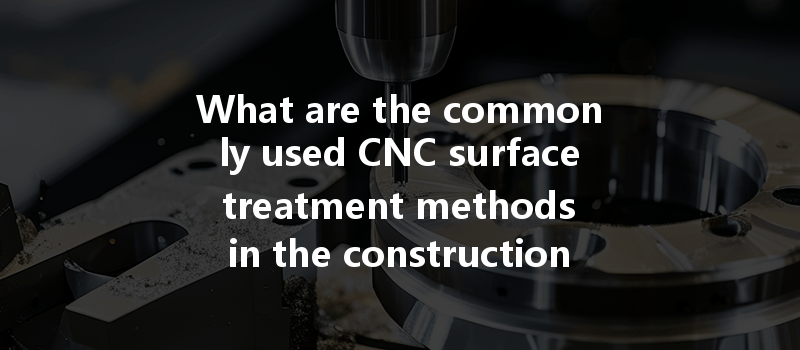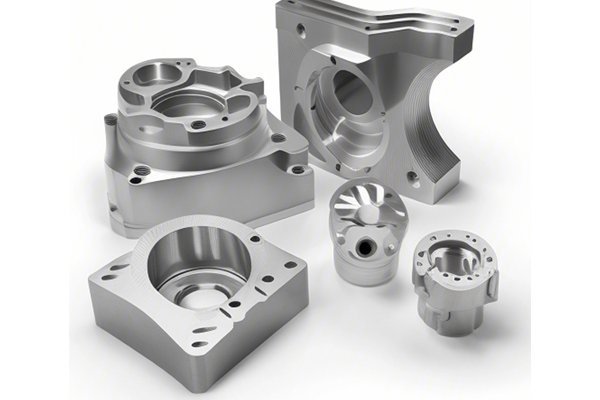Did you know that nearly 70% of all manufactured goods undergo some form of surface treatment? This statistic highlights the critical role that surface treatment plays in enhancing the performance, durability, and aesthetic quality of products across various industries. In the construction sector, CNC (Computer Numeric Control) machining, combined with effective surface treatment methods, is integral to producing parts that can withstand the rigors of harsh environments and heavy usage.
As technology continues to evolve, the construction industry is increasingly relying on CNC machining for precision and efficiency. But while CNC machining capabilities allow for high accuracy in producing components and structures, the finishing touches applied through surface treatment methods can make all the difference in terms of functionality, longevity, and appearance.
This article dives deep into the commonly used CNC surface treatment methods in the construction industry, exploring their applications, benefits, and best practices to ensure optimal results.
CNC machining is an advanced manufacturing process that utilizes computerized controls to drive machine tools and create parts and components with exceptional precision. In the construction industry, CNC machining is used for everything from creating structural components and fittings to producing intricate designs for architectural applications.
The accuracy of CNC machining enables the construction industry to meet stringent design specifications and tolerances, allowing for the seamless integration of prefabricated parts on job sites. As construction demands evolve, the need for tailor-made solutions only increases; thus, the role of CNC machining cannot be overstated.
Surface treatment methods enhance the performance and appearance of machined parts. The following aspects illustrate why surface treatment is pivotal in construction:
Understanding the purpose and advantages of surface treatments is essential for anyone involved in CNC machining and construction.
3.
Anodizing is an electrochemical process that increases the thickness of the natural oxide layer on the surface of metals, primarily aluminum. This method improves corrosion resistance, wear resistance, and aesthetic qualities. Anodized aluminum, for example, has a unique coloration ability, allowing for the creation of vibrant, attractive finishes.
3.
Powder coating involves applying a dry powder to a surface, which is then cured under heat to form a hard, protective layer. This method is popular for its durability, smooth finish, and resistance to chipping, scratching, and fading. It’s often used for aluminum extrusions, metal enclosures, and other construction components.

3.
Sandblasting, or abrasive blasting, involves propelling a stream of abrasive material against a surface to clean or etch it. This method creates a rough texture that improves the adhesion of paints and coatings, making it ideal for preparing surfaces before further treatment.
3.
Passivation is a chemical treatment method primarily used to enhance the corrosion resistance of stainless steel. The process removes free iron from the surface and promotes the formation of a protective oxide layer, which is crucial for maintaining the integrity of components in corrosive environments.
3.
Electroplating involves depositing a layer of metal onto a component through an electrochemical reaction. This method improves wear resistance, reduces friction, and enhances aesthetics. Common applications include plating steel components with nickel or chrome for corrosion protection and durability.
3.
Chemical conversion coating processes create a thin layer of protective material on metals, such as zinc or chromate coatings on aluminum. This method enhances corrosion resistance without significantly altering the metal’s surface profile, ensuring compatibility with subsequent operations like painting or adhesive bonding.
3.
Painting is a straightforward yet effective surface treatment method. It provides a protective coat to metal surfaces, enhances visual appeal, and can be adapted for various environments through specialized formulations. Proper surface preparation is crucial to achieving optimal adhesion and durability.
Selecting the right surface treatment method is important for meeting specific performance and aesthetic requirements. Here are some factors to consider:
Understanding the specific needs of the construction project will guide the selection of the most appropriate surface treatment.
To maximize the effectiveness of surface treatments, adhere to the following best practices:
The construction industry is rapidly evolving, and so are surface treatment technologies. Here are some trends to watch:
In summary, the role of CNC surface treatment methods in the construction industry cannot be overstated. From enhancing corrosion resistance to improving the aesthetic appeal of components, these treatments play a pivotal role in extending the lifespan and functionality of machined parts.
Investing in the right surface treatments not only protects assets but also enhances overall structural safety and performance. Choosing the appropriate treatment is crucial—consultation with surface treatment specialists, understanding the specific needs of your projects, and adhering to best practices can lead to successful outcomes.
As the construction industry continues to push the boundaries of technology and performance, the importance of surface treatments remains central to achieving excellence. By considering the insights shared in this blog, readers can better appreciate the vital aspects of CNC surface treatments, fostering a deeper commitment to quality and innovation in their projects.
With this knowledge in hand, it’s time for professionals to rethink their surface treatment strategies and embrace the potential benefits they offer. The future of construction depends on craftsmanship, precision, and the foresight to implement effective solutions—and surface treatments are undoubtedly at the forefront of this evolution.






